Darapsa myron mexicana
Darapsa myron mexicana
(Gehlen, 1933) Ampeloeca
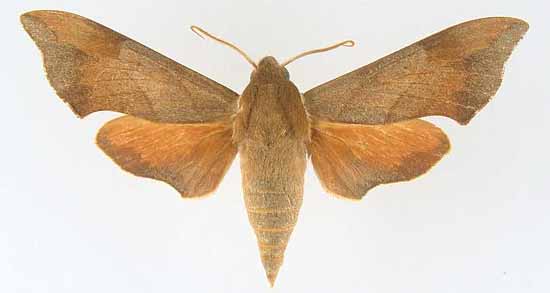
Darapsa myron
mexicana male, Mexico, courtesy of Vernon A. Brou.
This site has been created by
Bill Oehlke at oehlkew@islandtelecom.com
Comments, suggestions and/or additional information are welcomed by Bill.
TAXONOMY:
Family: Sphingidae, Latreille, 1802
Subfamily: Macroglossinae, Harris, 1839
Tribe: Macroglossini, Harris, 1839
Genus: Darapsa Walker, 1856
Species: myron mexicana (Gehlen, 1933)........
|
MIDI MUSIC
......It's a Wonderful World......
copyright C. Odenkirk
ON.OFF
<bgsound src="world.mid" LOOP=FOREVER>
|
DISTRIBUTION:
Darapsa myron mexicana is found in
Mexico, the specimen type locality (Veracruz).
Apparently it makes
its way into the southern Gulf States: Louisiana and Florida, although all of those reports may be of just a pale, brownish form of
nominate myron.
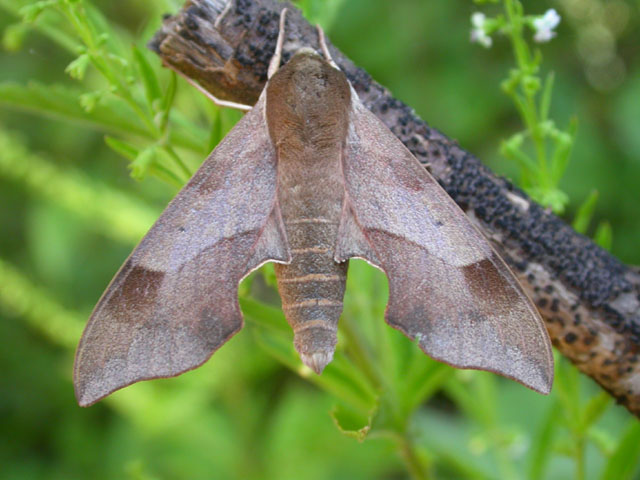
Darapsa myron mexicana, San Luis Potosi, Mexico, VIII 2003,
courtesy of
Jean Haxaire.
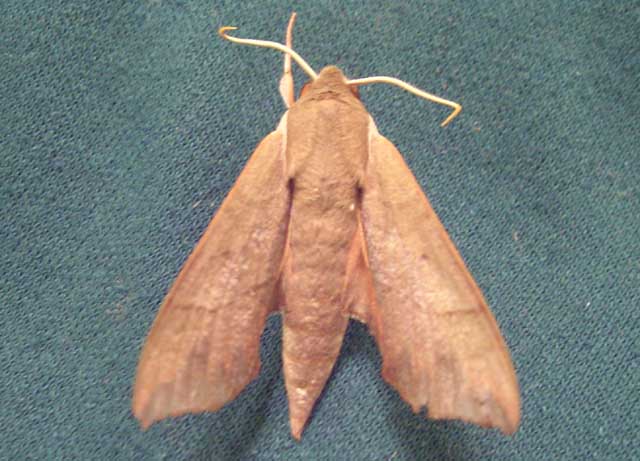
Darapsa myron pale form, Hillsborough River State Park in Tampa,
Florida,
April 29, 2006,
courtesy of Yolanda Acevedo.
Yolanda writes, "I collected this specimen at Hillsborough River
State Park in Tampa, FL on April 29, 2006. I'm afraid camping tents
don't make a good home for them in the Florida heat. This one was
overcome by heat (or maybe one of our Pathfinders?) It measures
1 1/4 inches long (3.2 cm). The bottom wings have a pinkish tint to
them."Jean Haxaire indicates the moth from Tampa, Florida,
is a pale from of myron rather than subspecies D. m. mexicana.
FLIGHT TIMES:
Darapsa myron mexicana probably produces at least two broods annually.
ECLOSION:
Little is known about the eclosions of the earth pupators, but many believe
pupae wiggle toward the surface just prior to emergence.
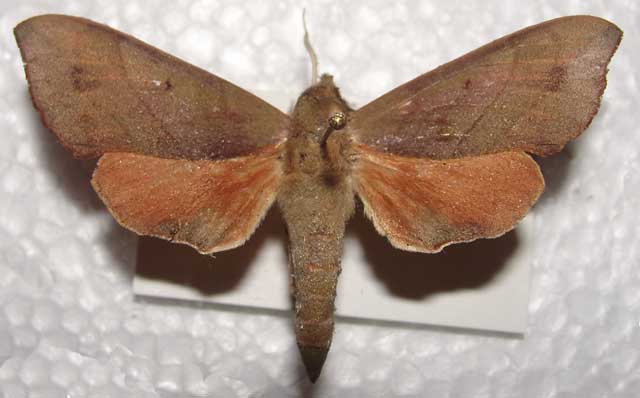
Darapsa myron mexicana, Wauchula, Hardee County, Florida,
early June, 2012, courtesy of Greg Roehm, tentative id by Bill Oehlke.
I believe that the specimen from Wauchula, Florida, is either subspecies Darapsa myron mexicana or a very lightly maculated (possibly faded)
nominate myron. Vernon A. Brou has confirmed that the Wauchula, Florida, specimen is nominate myron.
Shortly after I posted the Darapsa myron image above from Wachula, Vernon Brou advised me that the moth is a nominate
Darapsa myron myron brown form, and not subspecies Darapsa myron mexicana. James A. Tuttle also indicates there is the brown form of nominate myron,
seen in many of the southern counties in Florida. It must be fairly common in Hardee County, Florida as Greg Roehm also sends this image of three specimens he
captured on June 7, 2011.
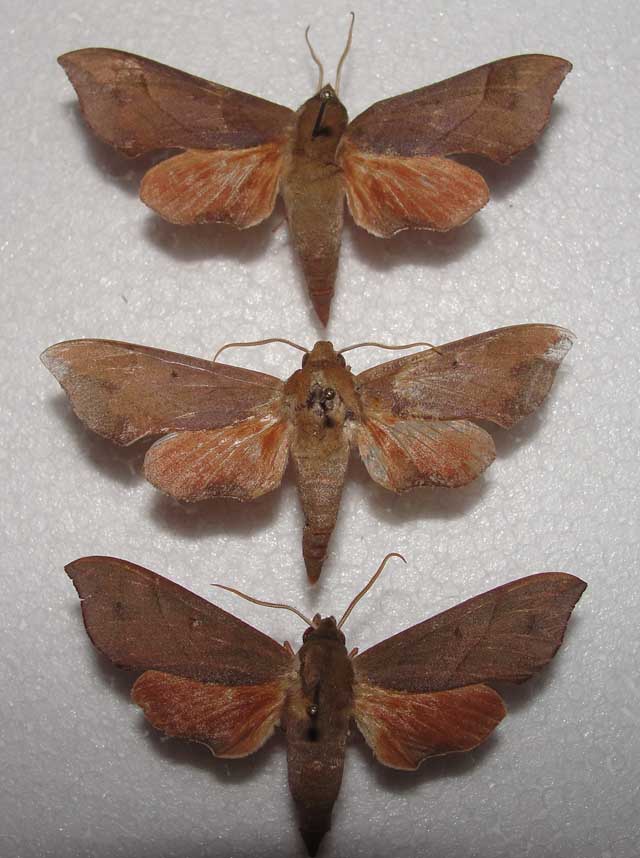
Darapsa myron myron trio, Wachula, Hardee County, Florida,
June 7, 2011, courtesy of Greg Roehm.
SCENTING AND MATING:
Darapsa myron mexicana females extend a scent gland from the posterior of the abdomen
to lure in the night flying males. Both sexes probably nectar at flowers.
EGGS, LARVAE, PUPAE:
Darapsa myron mexicana larvae probably feed on
Virginia creeper (Parthenocissus quinquefolia), Grape (Vitis),
Ampelopsis, and Viburnum.
Fully-grown caterpillars descend foliage trunks or stems and spin a loose cocoons in fallen
leaves on the ground.
At pupation time, I pick up Sphingidae larvae with my fingers and gently put them in a bucket, bottom-lined
with several layers of loose, dry paper towels. The larvae will crawl under the towelling and
pupate on the bottom of the bucket.
This method, a warm dark bucket lined with paper towelling, is
sufficient to induce pupation in most of the earth pupators and would probably work with myron mexicana.
Use your browser "Back" button to return to the previous page.
Goto Main Sphingidae Index
Goto Macroglossini Tribe
Goto Central American Indices
Goto Carribean Islands
Goto South American Indices
Goto U.S.A. tables




